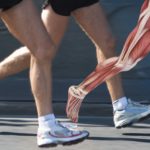
By Robert Forster, P.T., PHASE IV CEO
Every day we see research that shows exercise is the best medicine to prevent and treat many of the lifestyle diseases that plague our population. However, many people are not sure what to do in the gym and they are rightfully concerned about getting injured. Exercise is powerful medicine but proper dosage and use is critical to avoid problems and assure success. We evaluate every exercise with a risk-benefit analysis. If the risk of injury is greater than the benefit, or if the same result can be obtained with a different move, the exercise is not prescribed. These are the most common dangers seen in gyms everywhere.
KNEE EXTENSION MACHINE
The movement on this machine is unnatural and holds great potential for injury. Moving the knee against resistance from such a flexed position to the fully straight position subjects the back of the kneecap and the end of the thigh bone to great compressive forces that will eventually wear through the cartilage and create hole that will never get better. The result is osteoarthritis.
Alternative:
Leg press and squats work the quadriceps in a more natural movement because the forces are delivered through the foot while both the thigh and shin bones are moving at the same time and this subjects the knee cap to much less compressive forces.
FULL RANGE OF MOTION BENCH PRESS
Pushing the barbell off the chest positions the shoulder in a vulnerable position subjecting the front of the joint to excessive forces. The biceps tendon is stretched excessively and can damage a structure deep in the joint call the labrum which often can only be repaired with surgery.
Alternative:
Only lower the barbell to a position approximately five inches off your chest and then raise to the starting position. i.e. don’t let your elbows pass the plane of the body when lowering the weight.
LUNGES
The lunge exercise is popular in gyms everywhere and thought to be a safe and effective exercise to strengthen and shape the butt and leg muscles. However, we too often see Physical Therapy clients who have been injured from this exercise. There are two areas of the body that are vulnerable to the stress created during this multi-joint movement; the knee joints and the sacroiliac joints (where the lower spine meets the pelvis). These are the most commonly injured joints across all populations in general and therefore we want to always protect them from undue stress during both daily activities and fitness pursuits.
The Solution:
At PHASE IV we do not prescribe the lunge exercise because it fails our risk/benefit analysis. Instead the knee and the lumbo-sacral joints are first stabilized by isolating and strengthening the smaller “helper muscles” around the joints to optimize joint function. Only then are multi-joint movements prescribed to strengthen the larger muscles of the thigh and buttock and we have found the standing squat and the leg press movements much better tolerated once the joint protection phase is completed.
ARE WEIGHT MACHINES RUINING YOUR JOINTS?
There is a generally held belief that weight machines are safer (i.e. less likely to cause injuries) than free weights. Most gym machines take the user through a limited and defined path of joint movement thought to be safe for all bodies. They are designed so the mechanical axis of rotation is aligned with the mechanics of the human joint that it targets. The problem is that even with adjustable components it is impossible to assure the correct joint position for the wide range of body types, sizes and lengths that may use them. Also the resistance is artificially isolated in one direction and requires little stabilization of the joint involved for the targeted muscle to exert force. In this way the forces exerted on joint structures is unevenly distributed and can be damaging. When using ill-fitting weight machines damage can go undetected and become permanent before you know it.
The Solution:
There are many forms of resistance that can be used to safely to strengthen muscles; free weight, cables and pulleys, rubber bands, pneumatic devices, water and certain machines as well. However, we have found that there are only a limited number of resisted movements that are safe for any given joint of the body. These movements are those that rely on the muscles around the joint to work together and maintain correct alignment of the bones as the joint moves through the path of the exercise. Each exercise at Phase IV has been handpicked and proven safe and effective for clients ranging from 7 to seventy years old and for our Olympic Champions as well. We take no risks with joint health.
FALLACY: HIGH INTENSITY TRAINING FOR WEIGHT LOSS
With the health dangers of excessive body fat well documented and for reasons related to vanity, we are a population obsessed with being thin. Accordingly, many weight loss strategies have been espoused by trainers and health care professionals to reduce body fat. While everyone agrees that body weight is 100% the result of how many calories you take in and how many you burn from day to day and year to year over the decades there is a lot to consider in that statement. Is it best to reduce caloric intake, or increase calorie expenditure, or both? Along with diet modifications, and specific foods and elixirs that are touted to “melt fat” and make us thin, exercise plays a critical role in nearly all weight loss programs. But, what kind of exercise, at what intensity and for how long and how often is most beneficial to rid body fat?
The Problem:
One popular, but ill-advised, approach to accelerated weight loss is High Intensity Training or HIT. Proponents of HIT direct us to exercise hard as possible all the time to burn the most calories as possible per minute and create a calorie deficit which will lead to weight loss. Critics and those of us who work with athletes know however that this approach is unsustainable and can lead to adrenal gland burnout and chronic overuse injuries. Even seasoned elite and professional athletes would not hold up to a steady diet of high intensity workouts.
Additionally, if one could sustain high intensity workouts month in and month out these workouts do not facilitate the metabolic changes that favor permanent weight loss and so you would become a slave to your extremely taxing workouts. This leads to the “fit but fat” athlete because the real problem with the HIT value proposition is that while high intensity workouts may burn more calories and more overall fat per workout (along with the even higher carbohydrate burn), it does not teach your body to burn fat as its primary energy source all day long.
Solution:
Low intensity, extended workouts are best for sustainable weight loss because it’s not the calories burned in a workout that determines your body weight; it’s the number of calories you burn all day that leads to permanent weight loss. Rather, what is important in your workouts is; did you work at the intensity that will create metabolic efficiency, i.e. did you use that workout time to favorably re-program your physiology into one that prefers to burn more fats 24/7? This is the real key to sustainable weight loss.
After creating metabolic efficiency with a regimen of sustained low intensity workouts, the demands of a high intensity workout are met with a higher percentage of fats and all the benefits therein: less lactic acid production, and a bigger aerobic metabolism that actually uses the (less) lactic acid that is produced as an energy source. Lastly, if your body can rely on more of its own stored fat for the calories needed in high intensity efforts, then fewer calories are needs to be taken in during and after the workouts because your body will used its own fat reserves.
EXCESSIVE INCLINED TREADMILL WALKING
Walking is a functional activity which provides many benefits for the mind and body. The human body has evolved to be a very efficient vehicle, built to cover great distance with a built-in economy of motion. As a weight-bearing activity, walking strengthens the bones and keeps joints healthy. It is a great form of aerobic exercise that provides effective metabolic training. Walking is the perfect low-intensity exercise needed to create a fat-burning metabolism. The average American takes about 5,000 steps per day, and research has shown that if we focus on merely doubling that number, obesity and the lifestyle diseases that plague our population would be reduced to minimal levels.
The rhythmic nature of walking is good for the brain and helps with stress management by easing the brain into a meditative state and releasing endorphins. Walking also increases levels of endotropic brain growth factor, which is required for learning via the creation new synapses in the brain.
The Problem:
We have seen many tendon and joint injuries from walking continuously at inclines greater than 8-10 degrees, as people look to make the workout more strenuous. Walking at extreme inclines overtaxes the muscles and tendons of the ankle, including the Achilles tendon. In addition, when the incline is severe, it becomes difficult to maintain good body position and creates undue stress on the hips and lower back.
Furthermore, steep incline walking is counterproductive to permanent weight loss, as the higher-intensity effort favors carbohydrate metabolism, as opposed to creating a metabolism which favors fat as the primary energy source.
The Solution:
Add inclined walking to your workouts only after developing a foundation of aerobic fitness and musculoskeletal conditioning. Four to six weeks of flat walking, at least twice a week for 30 minutes, will lay the foundation of fitness and “harden” bones, tendons, and ligaments and protect you against injury. After developing this foundation, you should be progressive with inclined walking to help your body adapt to the stress of this activity. At first, only perform the inclined workouts once per week for at least two weeks before adding a second inclined workout per week. After a warm-up of at least ten minutes of flat walking, elevate the machine to no more than a 4-5 degree incline, and perform inclined intervals for two minutes at a time before returning to level walking for two minutes of recovery. Perform just five two-minute intervals, once per week, for the first two weeks. Do these to allow for musculoskeletal adaptation before progressing to two times per week on the third week.
Remember: ALWAYS stretch BEFORE and AFTER each workout and stay injury-free.
Get more information PHASE IV’s Periodized Strength and Flexibility programs, please contact us at 310-582-8212 or info@phase-iv.net








